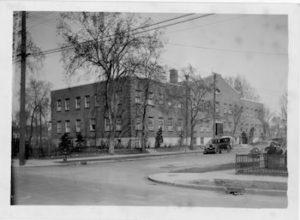
Phyllis Wheatley House, 1936
On this date, in 1924, the Phyllis Wheatley settlement house was founded.
Located in Minneapolis, MN., at the start of the 20th century, community centers known as “settlement houses” were started in many urban areas of the United States. Most were established in poor neighborhoods with a predominantly immigrant population and designed to help “Americanize” the communities. Others, like Phyllis Wheatley, were founded to deliver services primarily to Blacks continuously.
“The Wheatley” was a central gathering place for the city’s Black community, playing a historical role during an era of Jim Crow segregation and discrimination. Traditionally, the Center's activities focused on youth and family development through recreation, education, and performing arts programs.
The original site was an old frame building on the north side of town, once a Hebrew Talmud Torah school and later a sewing shop. Its first director was W. Gertrude Brown. The settlement house had four departments: education, recreation, music, and dramatics. Noticeably missing were classes in citizenship and English.
This set the Phyllis Wheatley house apart from other settlement houses focused on the “Americanization of foreigners.” A Black woman ran each department, and classes were structured for Black children and adults. Though initially resistant to the idea of a settlement house, Black men and their organizations changed their minds after the house opened. During the 1920s and 1930s, “Phyllis Wheatley,” as it was affectionately called, became the center of the Minneapolis Black community.
Because Blacks were often excluded from other special social service agencies, the Phyllis Wheatley House was called upon to perform a wider range of functions than most settlement houses serving European immigrants. The house was a hotel for out-of-town visitors to Minneapolis because hotels at the time would not accommodate Black guests.
Artists performing at the University of Minnesota, such as Paul Robeson, Langston Hughes, Marian Anderson, Roland Hayes, W.E.B. Dubois, and others, would be hosted at Phyllis Wheatley. Students educating themselves in the Minneapolis area also roomed at Wheatley. Civil rights organizations held meetings, and many activists gave speeches at the house. W. Gertrude Brown left the Phyllis Wheatley house in 1937.
Some local citizens who worked at Phyllis Wheatley include Ethel Ray Nance, Cozelle Breedlove, Earl Bowman, John Thomas, W. A. Harry Davis Sr., Dorothy McFarland, Lawrence Brown Lea Pride, Danny Davis, Patrice Johnson, and more. Many of its programs are still in operation today.
Minnesota Historical Society
345 W. Kellogg Blvd.
Saint Paul, MN 55102-1906
Hamline University
Mick Caouette, Producer
Humphrey Documentary Project
St. Paul, Minnesota 55104